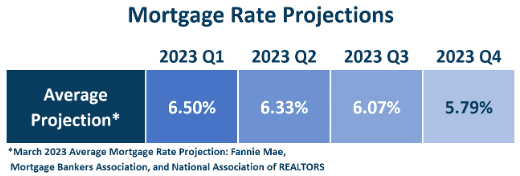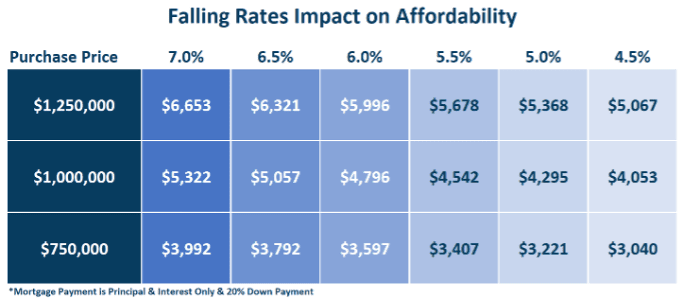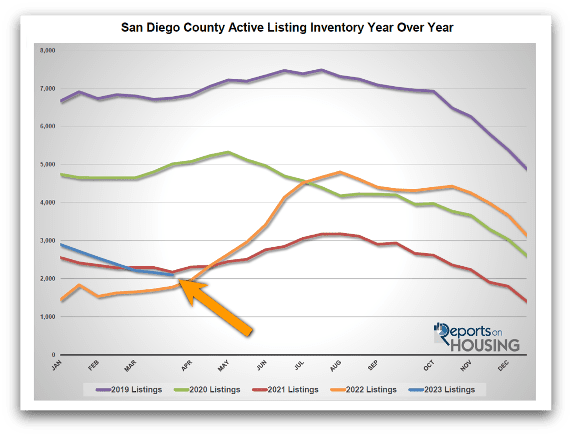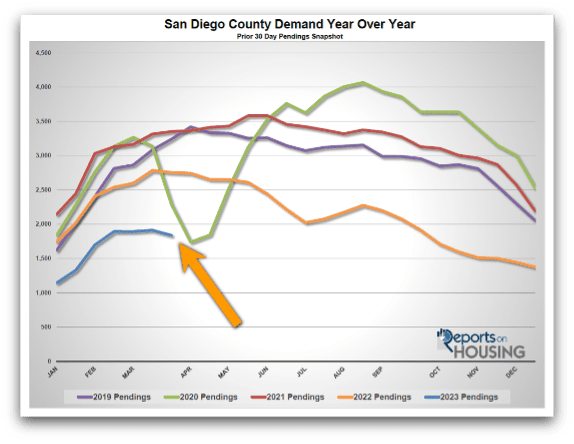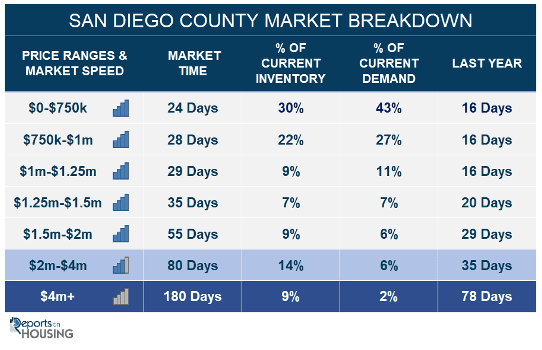Mortgage Rate Projections
Many experts forecast mortgage rates to drop into the 5s by year’s end.
This year’s March Madness ended with an unexpected NCAA Championship matchup between San Diego State University (ranked 18th before March Madness) and the University of Connecticut (ranked 10th). Three teams made their first Final Four appearance. Not a single team was ranked #1, #2, or #3. The critical takeaway is that sometimes it is best to expect the unexpected. It does not always play out the way everyone thinks.
This year’s housing market is also playing out much differently than expected. Nobody anticipated buyers bumping into each other with very few available homes to purchase, throngs of buyers cramming into weekend open houses, and bidding wars that result in multiple offers and sales prices above their asking prices. With today’s high mortgage rate environment, values were expected to continue to fall throughout 2023. That is precisely what occurred in the second half of 2022 when mortgage rates continued to soar higher, buyer demand plunged, and the inventory climbed and peaked at its highest level in two years. But that all changed as the inventory plunged to crisis levels.
The high mortgage rate environment affected both supply and demand. Naturally, everyone anticipated that high rates would enormously impact affordability and weaken buyer demand. Yet, very few anticipated that high rates would inhibit so many homeowners from listing their homes for sale. During the first three months of 2023 in San Diego County, 48% fewer homes were placed on the market, or 6,276 missing sellers. Homeowners are staying put and “hunkering down” because of their locked-in, low, monthly fixed mortgage payment. As a result, the inventory has dwindled, and the housing market has heated up substantially since January. The inventory has dropped from 2,898 in January to 2,101 today, a 28% drop. The 3-year average before COVID (2017 to 2019) was an increase of 11%, from 5,283 to 5,846.
At this point, the lack of home sellers impacts the housing market more than diminished demand, which explains the return of multiple offers and sales prices above the asking prices. Where will the market go from here? It all depends upon mortgage rates. Experts have had a tough time anticipating the direction of rates as it is closely tied to inflation. The trend reveals inflation is slowing falling, but it could take more than a year to reach the Federal Reserve’s 2% core inflation target. To combat inflation, the Federal Reserve increased rates at its fastest pace since 1981. It appeared as if they were poised to continue to increase the Fed Funds rate even higher than anticipated this year until the collapse of Silicon Valley Bank, Signature Bank, and Silver Bank within a week in March. Before the bank failures, mortgage rates were just above 7%. Since then, rates have fallen and bounced between a high of 6.75% on March 21st (according to Mortgage News Daily) and a low of 6.37% today. The bank closures and the exposed pressures on banking have changed the outlook for mortgage rates, and many experts are now expecting a U.S. recession between the third and fourth quarters of 2023.
Mortgage rates predictably fall when the economy slows, especially during a recession. Investors look to park their money long-term with safe investments, government bonds, and mortgage-backed securities (bundled home loans). As more and more investors flood these long-term investments, their rate of return drops, and mortgage rates drop. According to the average projection from Fannie Mae, the Mortgage Bankers Association, and the National Association of REALTORS, mortgage rates are anticipated to drop to 6.33% during 2023 Q2, drop further to 6.07% during 2023 Q3, and then drop below 6% to 5.79% during 2023 Q4. While forecasting mortgage rates is exceptionally challenging, one thing is certain: the Federal Reserve has attempted to slam on the economy's brakes through a series of short-term Federal Funds rate hikes. Eventually, the economy will decelerate further and likely enter a recession, and 30-year mortgage rates will fall.
For a $1 million home with 20% down, the payment was at $5,322 just before the bank failures at the start of March when rates exceeded 7%. It dropped to around $5,057 today, slightly less than 6.5%, a savings of $265 per month, or $3,180 annually. At 6%, the $4,796 monthly payment becomes a monthly savings of $526, or $6,312 per year, compared to 7%. If rates plunge to 5.5%, the payment drops to $4,542, a monthly savings of $780, or $9,360 annually.
As rates drop, affordability will improve, and buyer demand will rise. Stronger demand will heat the market further. The San Diego County housing market is already hot, dipping from 76 days at the start of the year to 34 days today. The market is scorching for everything priced below $1.5 million. Eventually, rates will drop enough to encourage more homeowners to stop “hunkering down” and list their homes for sale. The issue is that 89% of Californians with a mortgage have a mortgage rate at or below 5%. Incredibly, 71% have a rate at or below 4%, and 29% are fortunate to be locked in at 3% or lower. Rates will need to drop to the mid-5s to unlock more sellers.
The obstacle is that buyer demand reacts quicker to falling rates than homeowners who need more time to prep their homes for sale. This occurred in 2017 and 2019 and in the post-pandemic world of 2020 and 2021. In each of those years, market times dropped considerably during the last few months of the year. Typically, the housing market slows during the year’s final quarter and does not get hotter.
The window of opportunity to purchase is right now, before rates fall further, igniting demand. While the market may be unexpectedly hot right now, even with high rates, it can grow hotter with even more competition to purchase as rates eventually ease.
Active Listings
The active inventory continued to fall, declining by 3% in the past couple of weeks.
The active listing inventory decreased by 63 homes in the past two weeks, down 3%, and now sits at 2,101 homes, its lowest level since April last year. Typically at this time of year, the inventory rises by 4%. The San Diego County housing market is incredibly hot, not because demand is off the charts. Instead, there are not enough homes on the market today, and the lack of homes coming on the market is at crisis levels. The 3-year average number of homes placed on the market during the first quarter before the pandemic (2017 to 2019) was 13,121. This year, there were only 6,845 new sellers, 46% fewer, or 5,922 missing FOR-SALE signs. As long as rates remain high, this trend will continue to place a stranglehold on housing. Expect the inventory to rise slightly as more homes come on during the Spring Market, even at today’s muted pace.
Last year, the inventory was 1,778, 15% lower, or 323 fewer. The 3-year average before COVID (2017 through 2019) is 5,846, an additional 3,745 homes, or 178% extra, more than two-and-a-half times today.
Homeowners continue to “hunker down” in their homes, unwilling to move due to their current underlying, locked-in, low fixed-rate mortgage. The difference between their underlying rate and today’s prevailing rate is significant and precludes many homeowners from listing their homes for sale and moving to another house. This will continue until mortgage rates drop. For March, 2,523 new sellers entered the market in San Diego County, 2,002 fewer than the 3-year average before COVID (2017 to 2019), 44% less. These missing signs counter any potential rise in the inventory.
Demand
Demand fell by 4% in the past couple of weeks.
A snapshot of the number of new escrows over the prior month, demand, decreased from 1,913 to 1,838 in the past couple of weeks, down 75 pending sales, or 4%. Today’s level is slightly less than the 2,289 pending sales posted in 2020 during the initial lockdowns, but far more than mid-April of that year where it dropped to 1,738. Today’s demand is substantially muted due to higher mortgage rates and unaffordability; however, the market is scorching for buyers currently attempting to isolate a home. It is not due to unbelievable demand. Instead, it is because there is nothing to buy. Buyers cannot buy what is not for sale. Even with muted demand, the remaining buyers face unfathomable competition. This is not a market for buyers looking for a “deal.” Some sellers approach the market with unrealistic expectations or initially price their homes out of bounds. For buyers, these are great homes to pursue as there is typically far less competition to purchase, and sellers who have been exposed to the market longer are more willing to negotiate.
Last year, demand was at 2,756, 50% more than today, or an extra 918. The 3-year average before COVID (2017 to 2019) was 3,403 pending sales, 85% more than today, or an additional 1,565.
With supply and demand falling at similar rates, the Expected Market Time (the number of days to sell all San Diego County listings at the current buying pace) remained unchanged at 34 days in the past couple of weeks, its lowest level since May 2022. At 34 days, the market is hotter than the 76-day level to start the year, but this is more of a function of a lack of supply and not record-breaking demand. Last year the Expected Market Time was 19 days, substantially faster than today, and home values were screaming higher. The 3-year average before COVID was 52 days, a slower pace than today.
Luxury End
The luxury market slowed over the past couple of weeks.
In the past couple of weeks, the luxury inventory of homes priced above $1.5 million increased from 649 to 674 homes, up 25 homes, or 4%, its largest increase of the year. Luxury demand decreased by 33 pending sales, down 12%, and now sits at 244, its largest drop of the year. With demand falling and supply increasing, the overall Expected Market Time for luxury homes priced above $1.5 million increased from 70 to 83 days. The San Diego luxury market is still the hottest in all of SoCal. Selling luxury homes, especially those above $4 million, is taking a lot longer.
Year over year, luxury demand is down by 136 pending sales or 36%, and the active luxury listing inventory is up by 174 homes or 35%. Last year’s Expected Market Time was 39 days, an insane velocity for luxury.

